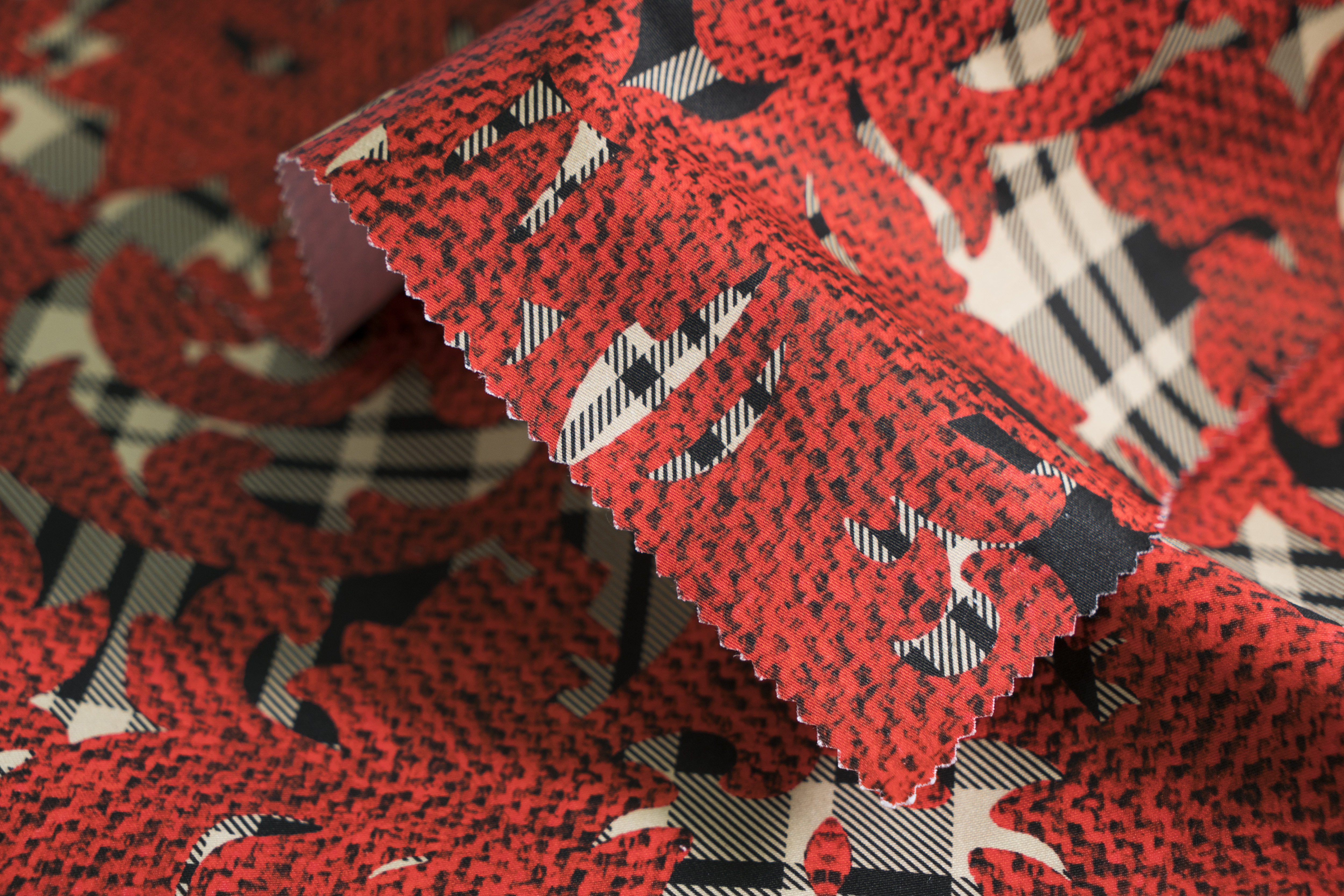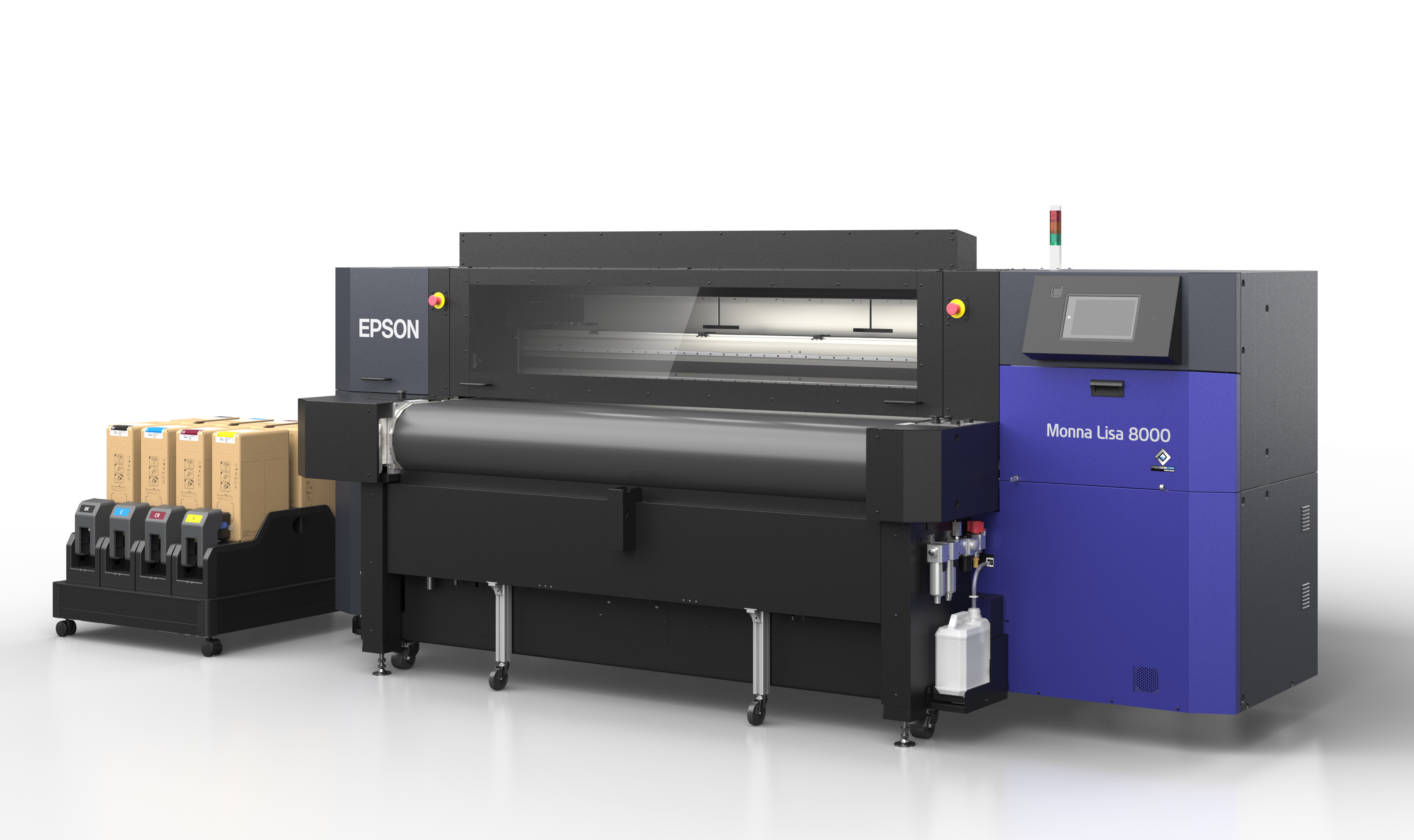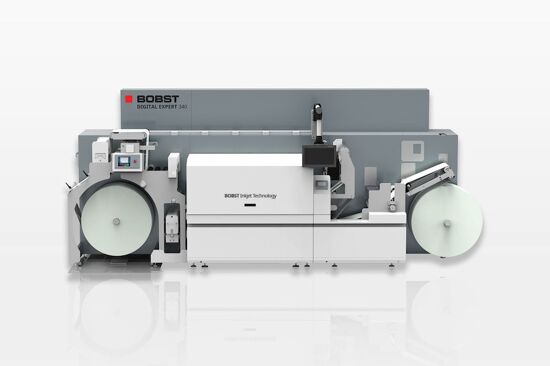Epson digital printing technologies continue to advance the digitisation of the industrial textile p
.jpg?width=750)
Epson technologies have been at the forefront of the textile industries evolution and the development of new emerging markets. Duncan Ferguson is the vice president of commercial and industrial printing for Epson Europe, and responsible for Wide Format Textiles and Labels. In our latest interview we discover how Epson is driving change and how the industry must evolve at speed to meet both consumers expectations and the evolution of the global textile marketplace.
As the digitization of the industrial textile printing sector continues to accelerate, it’s important to remember the historic provenance of the industry itself. The supply chain is complex and the strategic alliances within hold many, many years of invaluable experience.
We must also remember that over the last 20 years during the advent of digital technologies the textile marketplace itself has evolved – whilst the product has remained constant in its basic construction – textile print has been democratized.
The retail landscape is increasingly diverse, consumer behaviour and expectations are acute and now direct the buying strategy. The velocity with which roll to roll textiles and apparel garments are manufactured has accelerated beyond all expectation. How the industry moves forward will be driven by the technology in parallel with the consumer and an accelerated requirement for sustainable production process and product.
Epson technologies have been at the forefront of the textile industries evolution and the development of new emerging markets. Duncan Ferguson is the vice president of commercial and industrial printing for Epson Europe, and responsible for Wide Format Textiles and Labels. In our latest interview we discover how Epson is driving change and how the industry must evolve at speed to meet both consumers expectations and the evolution of the global textile marketplace.
What’s driving change and accelerating the demand for digital textile printing?

Caption: The two main trends that Epson are seeing are personalization and the requirement for customization – fast fashion – in the wider sense. Fast fashion as a concept has driven the demand for shorter print runs, quick turnaround and reduced stock holding. Credit: Epson.
Fast fashion as a concept has driven the demand for shorter print runs, quick turnaround and reduced stock holding. All of these factors enable close proximity production and are responsible for the exponential growth of digital textile printing in Western Europe where businesses are successfully competing against the more traditional print routes coming out of Asia.
Digital textile printing enables far more flexibility in the design of printed textiles and clothing. Compared to screen printing, tonal gradations for instance, are easily achieved using ink jet process to create beautiful surface effects, freeing the designer’s creativity. Other pressingly positive attributes include environmental benefits; digital printing has a much lower use of water and therefore offers a significant reduction in wasted H20 when directly compared to the process of screen printing.
Then there’s cash flow – Basically close proximity production reduces the requirement for stock, that means less stock for the retailer who would otherwise have a large quantity of product held in advance and or tied up in shipping. If designs are made to meet what the market demands at the time (not produced in advance) this actually brings fashion full circle - in that it delivers the correct products to store at the right moment. Fast fashion was originally a concept to reduce waste but over the years the business model has developed into an unsustainable cycle of “disposable fashion”. Environmentally the benefits of on demand production are immense, in reducing the overall waste within the supply chain.

Caption: Digital technologies have driven the growth of personalization and Fast Fashion, neither would have been possible without digital print technology, nor the growth of ecommerce. In tandem they have both made a significant contribution to the evolution of the retail sector. Credit: Epson.
The rise of ecommerce - If we look back at sales from 2005-2010 there was actually very little sales driven over the internet at that time. Back then digital textile production was developing new business models to serve traditional retail. However, ecommerce has established a new vibrant market sector for retail, offering instant gratification, customization and personalization. Consumers are now able to benefit from digital textile manufacturing as it enables real-time fashion as opposed to destination in-store retailing. Ecommerce has rationalized the fast fashion industry over the last 10 years and will continue to accelerate at pace. The current crisis has forced a further evolution in consumer behaviour, online sales have increased exponentially during the pandemic and its unlikely that consumers will revert back to the high street on mass.
As new markets have evolved how has Epson technology developed specifically for textile printing over the last few years?
Epson’s printing technologies regardless of final output are designed around the Epson micro piezo print head. Our latest generation print head technology - the precision core – was introduced in 2013 and it was developed with industrial usage in mind. Previous to that, effectively we had our consumer printing business and high-quality graphics applications. From 2010 onwards we really took an interest in the expanding markets that we sold into and Epson developed a wider business index. At this time Epson had a longstanding partnership with Robustelli and For.tex and we developed a textile wide format business, moved into the signage sector, and developed the industrial label press, all around the early part of the last decade.
In 2013 the precision core print head was introduced and alongside this came the Monna Lisa Evo Tre generation for industrial textile printing, which remains our flagship textile press, with the ML Evo Tre 32 running at 423 sqm per hour.
.png?lang=en-GB)
Caption: The latest Monna Lisa Evo Tre digital textile printing solution uses 64 specifically designed print heads based on precision core technology for high quality industrial digital textile printing at speeds of up to 740 sqm per hour. Credit: Epson.
The latst Monna Lisa Evo Tre was shown at ITMA in 2019 and will launch in approximately a years’ time. We continuously increase the speed at which the Monna Lisa series can operate by both increasing the number of print heads and constantly upgrading the head technology. The new series will have various options; 8 head, 16 head, 32 head and 64 heads installed - offering variable print speeds for all sectors of the textile marketplace. Great care is taken with every advancement, we will never sacrifice are reputation for exceptional quality to gain speed, further, Epson will always maintain or seek to improve the performance of the Monna Lisa print series.
Epson produce their own inks, print heads and machine mechanism which gives absolute control over technology and components. This has enabled us to develop solutions for all areas of the market from the entrepreneur who requires a smaller output speed at an affordable cost, using multiple machines across ink sets - to high quality established textile converters that have been in business for over 70 years. Service and maintenance are important factors when choosing a print technology. A concept Epsons partner Robustelli have developed with great success over the years as demonstrated in the Como area of Italy where digital textiles now enable of 80% of printed production. Epson have a team of engineers and technicians based in Italy at their Textile Solutions Centre which both supports and shares knowledge with Epson customers. A further Textile Solution Centre is currently being built in Japan.
How does Epson convey the dynasty of Robustelli and For.tex?
Epson’s partnership with Robustelli who’s 80 years’ experience in textile manufacturing has ensured that the heritage and knowledge transfer of traditional textile manufacturing theology and practice continues to be applied to the digitisation of the industry. It’s for this reason that the Italian Como area’s textile industry has survived, preserving the heritage of Italian textiles against strong competition from the Far East and establishing Western Europe as a centre of excellence for digital textiles where the Epson Monna Lisa technology is the most common machine choice.
How have Epson’s technical advancements disrupted the Industry and why do they continue to create new opportunities?
Digital technologies have driven the growth of personalization and Fast Fashion, neither would have been possible without digital print technology, nor the growth of ecommerce. In tandem they have both made a significant contribution to the evolution of the retail sector. What’s next? I think that personalization has only just begun. Technology enables the design process to evolve further, full body mapping will enable deeper product personalization and consumers will move forward to create garments that fit perfectly to any body shape. Mass personalization is going to become the norm. This will also create environmental benefits; personalization embodies investment alongside value and will perhaps slow down fast fashion and its disposable culture by reducing waste. We have witnessed this movement already in the DTG marketplace which continues to accelerate. Emerging entrepreneurial business models will converge into the retail sector for personalized products using roll to roll print technologies. There will be a kick-back to fast fashion in the near future and personalization will gain market share.
Where have you seen the biggest change in adoption (and why) across ink sets and industry sectors?
The market is continually evolving to meet new expectations – today we want solutions for minimal pre and post treatment, we want to conserve time in order to gain speed of delivery, there’s a requirement to reduce energy and become more sustainable and a lot of people are looking at this.
The Interior furnishings industry is an area that holds great potential for disruption. The sector has traditionally used pigment inks predominately and as technologies evolve to simplify the production process, we can expect to witness new business models emerge. The interior industry is also burdened by the similar issues to the fashion industry – stock – inventory is an issue for all Interior brands. Switching to an on-demand production model will be prevalent in the future. Epson continue to drive new innovations working closely together with their R&D team, ink chemists and technicians who continually track industry trends to develop new applications.
Print on Demand - What are the essential key elements that facilitate agile production?
The essential key elements are good quality design programs. High quality RIP software is vital for efficient management of image data. Management information technology is imperative for multiple printer operations. But there’s one I’d like to note more than the others and that is colour management which it’s not utilised efficiently at present. Moving from analogue to digital production has not solved the issue of strike-off’s. Colour is a complicated science. Digital does make sampling quicker and simpler, but to get consistency and to reduce waste - colour management has a strong role to play in the production process.
Sustainability is now a growing concern for all stakeholders – Can digital technologies deliver a sustainable future for textile printing??
Digital technologies can definitely improve the environmental footprint of the textile industry. As I mentioned earlier in our conversation there is a reduced waste stream compared with screen printing. As an example, reducing water usage is of great importance considering that much of the world’s textiles are manufactured in water scarce areas. Digital textile printing in itself helps but there are two issues; there is what technology can achieve and what society can achieve in terms of its behaviour - and you do need both to achieve sustainability.
I can’t say digital will solve the problem, it cannot on its own but what we can do is to provide multiple business models that enable far more sustainable production. Getting away from disposable fashion is a behavioural issue for society. Digital technology is the driver of potential change for new business models that can improve the environmental footprint of the textile industry.
If we don’t switch from traditional analogue printing over to digital production, it’s going to be very difficult to make any environmental improvement. I think we all have a responsibility. In Epson we have a strong ethos in terms of sustainability, and we will continue to implement factors into the design of our printers and technologies that will continually improve sustainability.
Topics
Interested in joining our community?
Enquire today about joining your local FESPA Association or FESPA Direct
Recent news

WrapFest returns to Silverstone amid vehicle customisation boom
WrapFest, the dedicated show for the vehicle and surface decoration community will return to the prestigious Silverstone Race Circuit this year, running from 3-4 October 2024.

Opportunities for large formt printers in labelling
Nessan Cleary shares how labelling can present a unique opportunity for large format print suppliers who are looking to grow and diversify their business.
.png?width=550)
